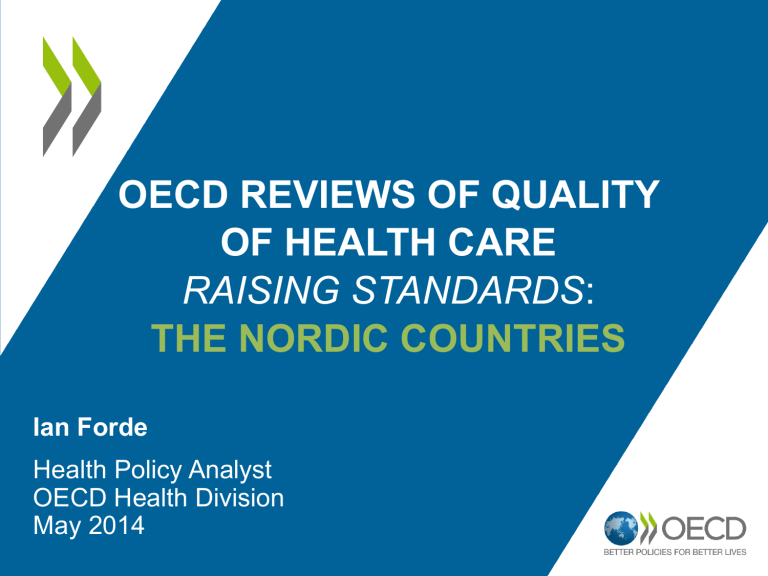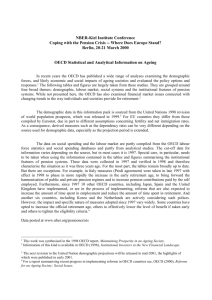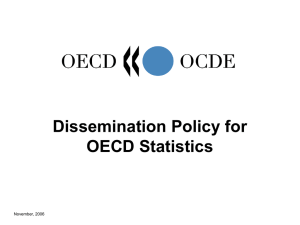Ian Forde (Policy analyst, OECD Health Division)

OECD REVIEWS OF QUALITY
OF HEALTH CARE
RAISING STANDARDS
:
THE NORDIC COUNTRIES
Ian Forde
Health Policy Analyst
OECD Health Division
May 2014
Where are the Nordic countries today?
Commitment to health coverage for the whole population
Excellent performance on most quality indicators
Very good health and LTC systems
Preparing the health system to face new challenges
A strategic vision of how health services should develop over time
Good outcomes, especially for hospital care
Health systems are generously funded
Health expenditure per capita, 2011 (or nearest year)
High levels of public expenditure on
LTC
EMERGING CHALLENGES
Primary care is strong
Primary and community care is being asked to do more and demonstrate better value for money…
… but often ‘flying blind’
Increasing pressure on community services
Co-ordinated and integrated care is much discussed …
… but yet to deliver much benefit for patients and their families
A distinctive policy choice to take LTC outside of institutions
Private providers are increasingly important players in the market place of care…
… but getting the right balance between freedom and regulation remains unclear
Strong local governance is characteristic
Central authorities playing an increasingly prominent role in quality monitoring and improvement…
… but this can create tensions and inefficiencies
Thank you
Contact: ian.forde@oecd.org
Read more about our work Follow us on Twitter: @OECD_Social
Website: www.oecd.org/health
Newsletter: http://www.oecd.org/health/update
WHAT THE NORDIC
COUNTRIES COULD DO…
Improving the quality of primary care
Nordic countries need to ensure that
• there is a clear strategic vision for primary care shared by national government, county councils, municipalities and leaders in primary care
• the reforms on choice and competition promote co-ordinated care and avoid fragmentation
• payment and incentive systems foster cooperation, co-ordination and joint working.
Encourage GPs to adopt a leading role in assuring quality and outcomes
Coordination
Better coordination between primary and secondary care
Governance
A clearer role for central government
Developing/ better use of information infrastructure
Information
Some examples…
• define a set of core quality standards for primary care that can be used to consistently and transparently monitor, assure and improve the quality of care
• study the effects of recent choice and competition reforms to ensure that they do not fragment services for patients with complex needs
• equip the primary care workforce to play a more proactive role in primary and secondary prevention of chronic disease
• standardise the information infrastructure in primary care to support improvements in the measurability of quality in primary care on a consistent basis.
Continuous quality improvement in longterm care
Strengthen measurement
• e.g. develop quality indicators for the sector and encourage comparison across providers
Balance tailored care against standards
• e.g. make wider use of standards, protocols and guidelines
Encourage coordination
• e.g. joint care-coordinators or health and social care planning and purchasing
TO CONCLUDE…
Key policy recommendations
1. Develop richer information systems,
2. Clarify the role of central government,
3. Strengthen co-ordination and integration across services
4. Evaluate closely the effects of recent reforms
Want to read more?











